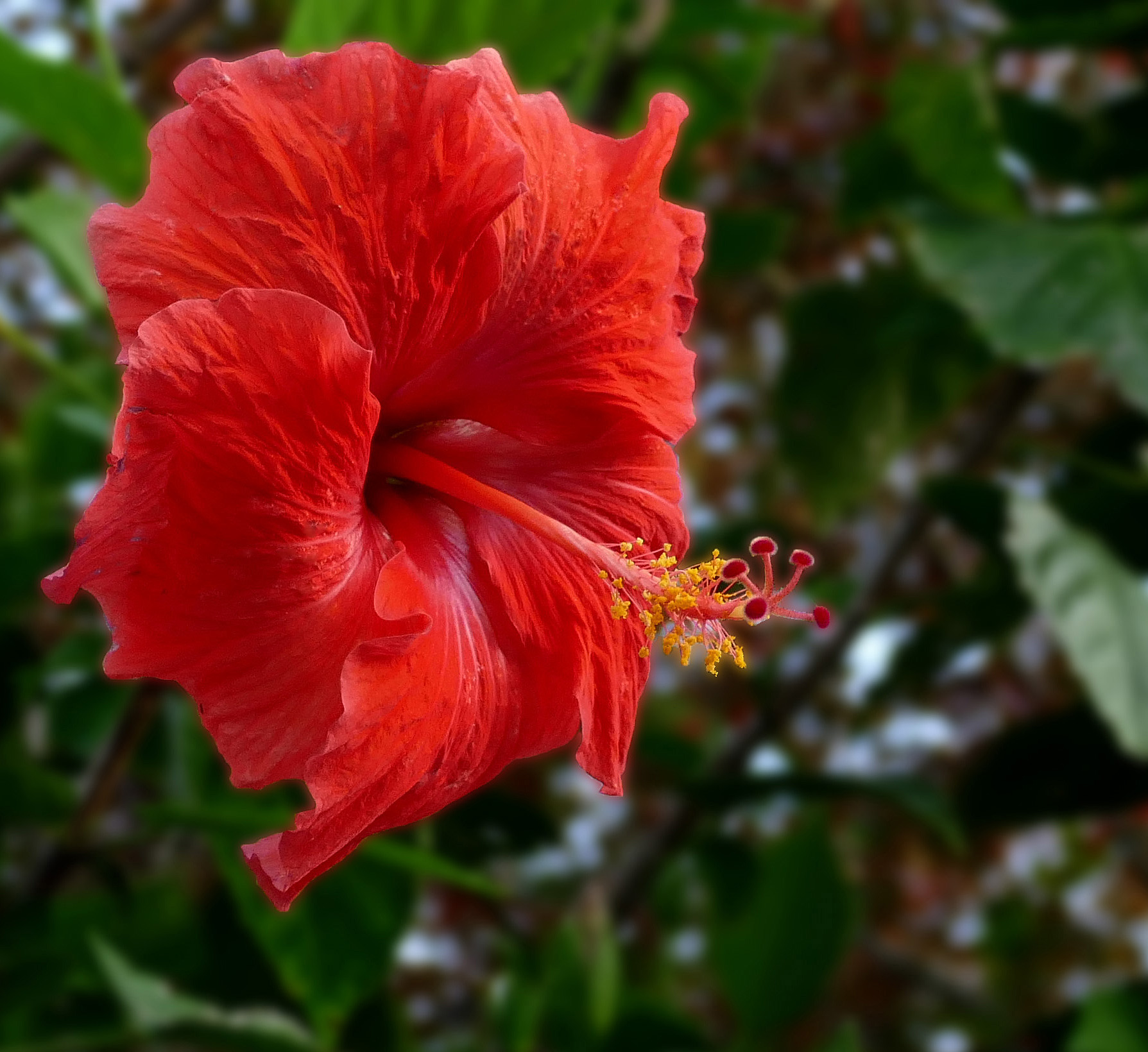Very appreciated for its beauty and its bright colors, the hibiscus or althea is a treasure of benefits for the skin as for the hair. It moisturizes, nourishes, protects the epidermis from aging and gives shine to the hair by strengthening it.
A natural remedy from Africa
Nicknamed "sorrel of Guinea", the young leaves of hibiscus are consumed there as a vegetable. "And its flower of intense red is very much appreciated in infusion under the name of bissap (or carcadet, according to the regions), for its good acidulated taste. It has a high concentration of anthocyanins, highly red antioxidant red pigments . Hibiscus is also used for therapeutic purposes against hypertension, " says Émilie Jolibois, a specialist in natural ingredients. On the beauty side, African women use it in the form of oily macerate, which they apply as a hair mask, to strengthen their hair and give it volume.
Nutritive and moisturizing active ingredients
The hibiscus flower contains sugars with moisturizing action. "Integrated in a cosmetic care, they form a very thin film on the skin that attracts water into the epidermis," explains Émilie Jolibois. As for the oil, it is obtained by cold pressing the seeds of the plant. Rich in essential fatty acids, it is composed in particular of linoleic acid, which is very interesting for dry and fragile skins . It participates in the manufacture of ceramides, these small bricks which constitute the protective barrier of the skin. "Moreover, this oil is pleasant because soft to the touch, non-greasy and odorless. This allows to integrate it without difficulties in formulas of care for the skin ", adds the expert.
High dull anti-dyeing power
Hibiscus is known for its antioxidant qualities because, in addition to anthocyanins, it is rich in vitamin C and polyphenols. Thanks to them, it captures the free radicals, neutralizes them and protects the cells. "Inside the flower, we also find citric, malic and tartaric acids, better known as fruit acids," explains our expert. In an applied care on the skin, they eliminate the dead cells, responsible for a dull complexion, and thus stimulate the production of collagen. This makes it possible to regain radiance.
On the hair, they tighten the scales of the fiber and bring a lot of brilliance.
A natural remedy from Africa
Nicknamed "sorrel of Guinea", the young leaves of hibiscus are consumed there as a vegetable. "And its flower of intense red is very much appreciated in infusion under the name of bissap (or carcadet, according to the regions), for its good acidulated taste. It has a high concentration of anthocyanins, highly red antioxidant red pigments . Hibiscus is also used for therapeutic purposes against hypertension, " says Émilie Jolibois, a specialist in natural ingredients. On the beauty side, African women use it in the form of oily macerate, which they apply as a hair mask, to strengthen their hair and give it volume.
Nutritive and moisturizing active ingredients
The hibiscus flower contains sugars with moisturizing action. "Integrated in a cosmetic care, they form a very thin film on the skin that attracts water into the epidermis," explains Émilie Jolibois. As for the oil, it is obtained by cold pressing the seeds of the plant. Rich in essential fatty acids, it is composed in particular of linoleic acid, which is very interesting for dry and fragile skins . It participates in the manufacture of ceramides, these small bricks which constitute the protective barrier of the skin. "Moreover, this oil is pleasant because soft to the touch, non-greasy and odorless. This allows to integrate it without difficulties in formulas of care for the skin ", adds the expert.
High dull anti-dyeing power
Hibiscus is known for its antioxidant qualities because, in addition to anthocyanins, it is rich in vitamin C and polyphenols. Thanks to them, it captures the free radicals, neutralizes them and protects the cells. "Inside the flower, we also find citric, malic and tartaric acids, better known as fruit acids," explains our expert. In an applied care on the skin, they eliminate the dead cells, responsible for a dull complexion, and thus stimulate the production of collagen. This makes it possible to regain radiance.
On the hair, they tighten the scales of the fiber and bring a lot of brilliance.

No comments:
Post a Comment